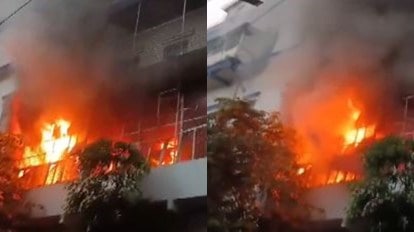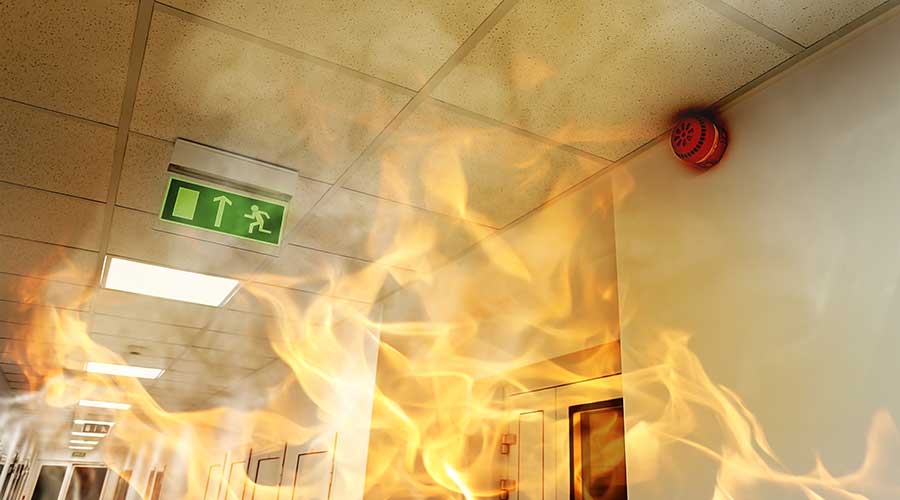Tragic Fire at New Amsterdam Public Hospital: A Heartbreaking Loss of Lives
On a somber day that will forever be etched in the memories of many, a devastating fire broke out at the New Amsterdam Public Hospital (APHC) in Guyana, resulting in the tragic loss of 65 lives. This catastrophic event has not only shaken the local community but has reverberated throughout the nation, leaving an indelible mark on the hearts of families and loved ones who are now grappling with the aftermath of this horrific incident.
The Incident
The fire erupted in the early hours of the morning, catching many patients and staff off guard. Initial reports suggest that the blaze originated in a storage area before rapidly spreading throughout the facility. Despite the efforts of firefighters and emergency personnel, the inferno engulfed critical sections of the hospital, making rescue efforts perilous and chaotic.
As smoke billowed into the sky, the sound of sirens filled the air, signaling the arrival of emergency responders who worked tirelessly to contain the fire and evacuate individuals trapped inside. Tragically, the combination of smoke inhalation and injuries sustained during the evacuation led to a heartbreaking toll, with 65 lives lost, including patients, medical staff, and caretakers.
Community Response
The immediate response from the community was one of shock and disbelief. Hospitals in neighboring regions were put on high alert, preparing to receive survivors and those affected by the fire. Vigils and gatherings sprang up as families sought solace and support, coming together to mourn the profound loss.
Local leaders, healthcare officials, and citizens alike expressed their condolences and offered assistance to the grieving families. The government declared a state of mourning, and flags were flown at half-mast in remembrance of the victims. Community centers opened their doors to provide counseling services and a space for those impacted to share their grief and find comfort in one another.
Investigating the Cause
In the wake of such a disaster, questions inevitably arise regarding the cause of the fire and the safety protocols in place. An investigation was quickly launched to determine how the blaze started and why it spread so rapidly within the hospital. The APHC, like many public hospitals, has faced challenges related to funding and maintenance, raising concerns about whether adequate fire safety measures were in place.
Survivors and witnesses reported chaotic scenes as people struggled to navigate the smoke-filled hallways. Eyewitness accounts highlighted the heroism of some staff members who stayed behind to assist patients who were unable to evacuate on their own. These stories of bravery stand in stark contrast to the tragedy of the situation, reminding us of the commitment healthcare workers often show, even in the face of life-threatening danger.
The Human Cost
The human cost of the fire extends beyond the immediate loss of life. Families are left to grapple with the emotional and psychological impact of losing loved ones in such a sudden and traumatic way. The victims were not just statistics; they were fathers, mothers, brothers, sisters, and friends, each with their own stories and dreams now extinguished.
For the families left behind, the grief is compounded by unanswered questions. Why did this happen? Could it have been prevented? As the investigation unfolds, these questions will weigh heavily on the hearts of those who are mourning.
Broader Implications
This tragedy serves as a stark reminder of the vulnerabilities within healthcare systems, particularly in developing nations. The New Amsterdam Public Hospital, serving a crucial role in the healthcare infrastructure of Guyana, now faces scrutiny regarding its preparedness for emergencies.
The fire has sparked discussions about the need for improved safety standards across healthcare facilities, not only in Guyana but globally. As the world grapples with the reality of disasters, be they natural or man-made, the importance of investing in resilient healthcare infrastructure cannot be overstated. Governments and organizations must prioritize safety measures, ensuring that facilities are equipped to handle emergencies effectively.
Healing and Moving Forward
In the days and weeks following the tragedy, the path to healing will be long and arduous. Community support will play a crucial role in helping families cope with their loss. Mental health services and counseling will be vital in assisting individuals to process their grief and begin to rebuild their lives.
As a nation mourns, it also looks for ways to honor the memory of those lost. Memorials and tributes will undoubtedly arise, serving as a testament to the lives that were tragically cut short. The legacy of the victims will live on in the stories shared by their loved ones and the lessons learned from this tragedy.
Conclusion
The fire at the New Amsterdam Public Hospital has left a scar on the collective consciousness of Guyana. As the community comes together to mourn, support one another, and seek justice for the victims, it is imperative to reflect on the lessons this tragedy imparts. It calls for a renewed commitment to ensuring the safety and well-being of all individuals within the healthcare system.
In the face of unimaginable loss, the resilience of the human spirit shines through. Together, the people of Guyana will navigate this dark chapter, striving to emerge stronger and more united in their resolve to honor those who were lost in this tragic event. The journey ahead will be difficult, but it is one that must be taken with compassion, understanding, and a determination to prevent such a tragedy from happening again.














